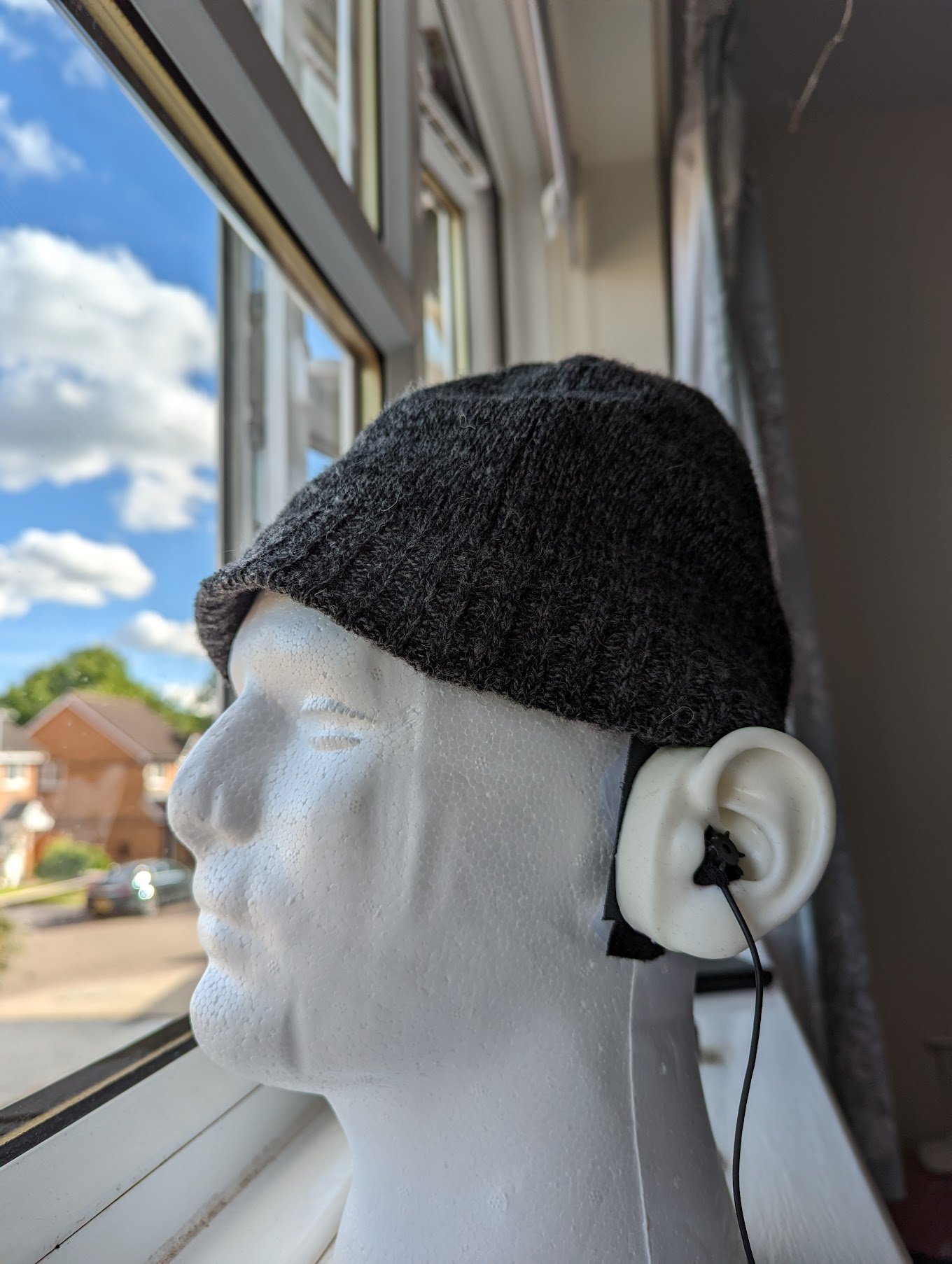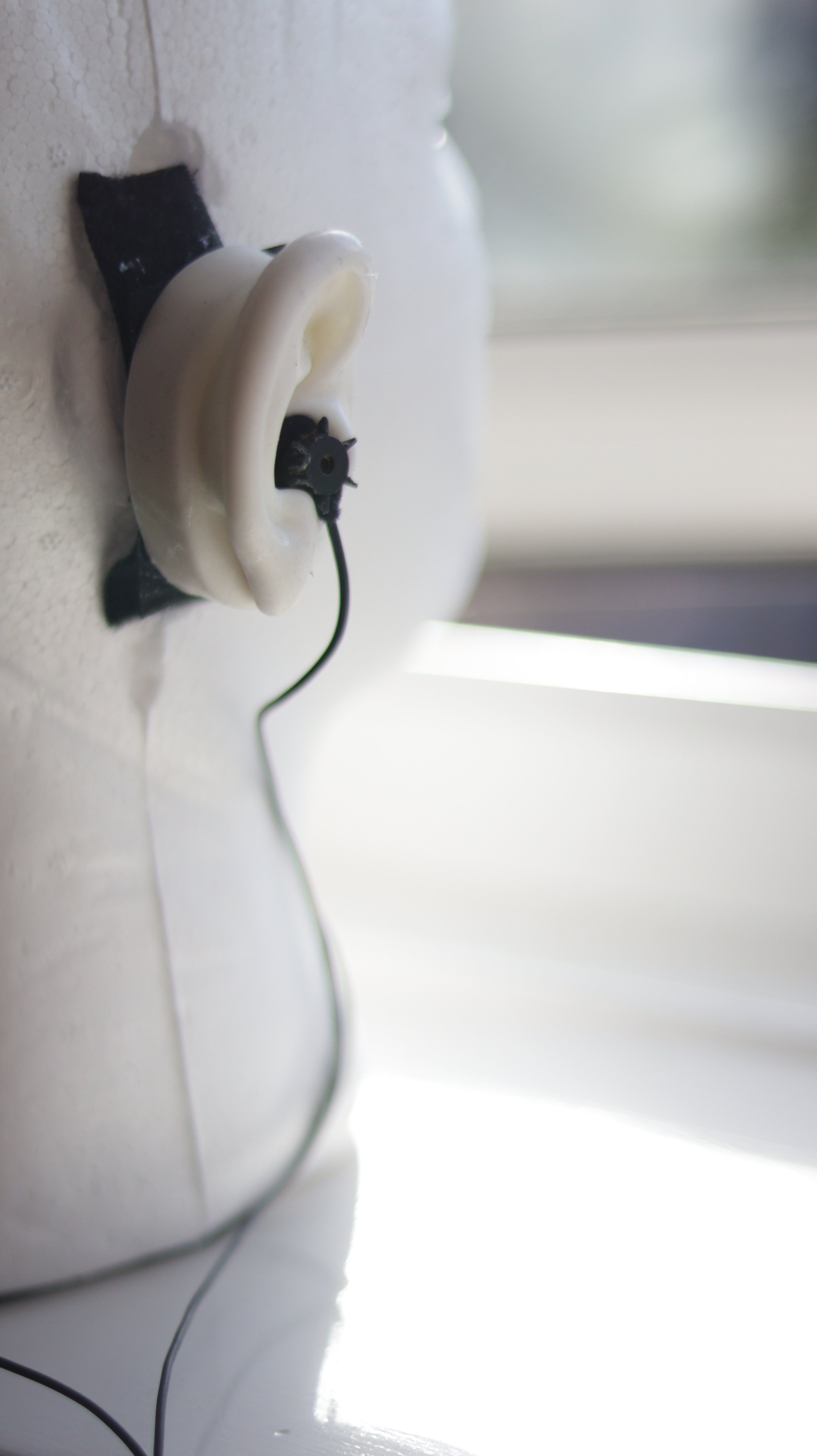Inspired by Duchamp’s idea of ‘infrathin’ or the rapidly fading trace or aura of something that was.
Re-evaluation and mapping our sense of place and time with the ‘sonic dérive, GPS data and binaural recordings : Sonic mapping of desire paths and places of sonic interest.
The practice of soundwalking and recording has been implemented as a method in artistic composition pedagogy, soundscape awareness interventions, in addition to social science, psychology and acoustics research. This paper explores the author’s phenomenological practice of recording sonic dérives, psychogeographic sound wanderings through urban and rural environments; exploring both consciously and unconsciously environments and paths of sonic interest, leading to the creation and mapping of sonic ‘desire’ paths.
Are we hearing the same soundscape? Who's listening, how, and to what?'
Soundscape research has often struggled to deal with the multidimensional experience of the phenomenological perception of the sound environment. Whilst there have been a number of important large multidisciplinary projects formed from a wide range of stakeholder disciplines, results have often been epistemologically split between interpreting the complex multidimensional, multi-epistemological, phenomenological experience of a soundscape for some disciplines, versus the positivist, objectivist quantitative approach of other disciplines.
Building a DIY binaural head (or Billy as we know him)
Billy the ‘ed
I have created many binaural heads over the years since first learning about them during my undergraduate degree in the early 90s. Since then binaural has been a mainstay in my field recording methods, mostly using in-ear microphones in my own ears. I build binaural heads for various different projects as I like the DIY approach, and it can offer some great results. I have been (and still am!) very fortunate to have access to the Neumann KU-100 binaural head which as you would expect for the price (around £7000 in 2022!) is an exceptional piece of gear . Given the cost of the Neumann, I can't afford to own one without taking out another mortgage! Plus I think I would feel a bit worried about taking it out into the field!
That means making something that is a little bit quick and dirty (and fun!) and within the budget of my students. In the past I have made them using free mannequin heads that have been found discarded at the back of shops, or from going into certain shops that are having a refurb and asking if they have any lying around or broken. With a mannequin head, you do get more reflections due to the nature of the plastic, plus you also have to drill or cut into the mannequin's ears to insert the microphones.
For this project I have chosen to use a polystyrene head. The polystyrene head should be more absorptive and much less reflective particularly of high frequencies than a mannequin, but not as reflective as an actual head. I did think of putting a wig on to provide a small amount of realism and a very small amount more absorption but in the end I decided to put on a beanie…..because I had one and of course many of us walk around with beanies.
DIY Binaural Head with Soundman OKM microphones
Is the head around the right size? I haven’t had a chance to measure it properly, but it seems that it is a little bit smaller than the average human head, but most importantly it provides separation and its own unique HRTF.
Parts
I purchased all of the parts from Amazon (other stores are available!)
(**NB these are Amazon affiliate links)
Total cost £13.78
From my tool drawer I used a couple of strips of velcro and a few (quite a few!) dabs of superglue.
Construction
In this instance, I decided not to cut holes in the ears because I am going to primarily be using my faithful SoundMan OKM classic binaural mics as they fit into the ear canal like earbuds without needing to come from the other side. If this works well, I will get another set to cut a hole in to fit my DPA4060s in.
I had trouble sticking the ears to the polystyrene head and should really have thought of the porosity of the materials before attempting to glue them. The silicone ears don't retain glue very well and the polystyrene was very absorptive. In the end I did a bodge (the essence of DIY!) and by using Velcro as a base which I then superglued to both the ears and the head. There was of course a plus side of this bodge, not only did the ears attach firmly and securely, they are now fully removable, should I wish to do any further experiments with them in the future.
Overall, I'm really happy with the results of this binaural head and the recordings.
Example recordings
Soundman OKM Classic with Tascam DR100 MKIII
DPA 4060s with Tascam DR100 MKIII
Thoughts
Of course I am under no illusions (nor should I be given my background!) that this DIY set up is ever going to be as good as your own head, nor is it going to be as robust or precise as something like the Neumann head.
Then again that is not the point of this project…
The idea is to create a cheap binaural recording system which provides a basic HRTF (head related transfer function) and non-coincident separation between two microphones, which provide the listener with occlusion and interaural time and level difference. In which case, I think Billy (the head) works pretty well and I would encourage anyone who's thinking about experimenting with sound, field recording or sound design it to spend £15 (correct in 2022) on building your own DIY head of some form, sticking your mics in or on it see what you are able to record.
You could easily put Billy the Head in a bag and take him out for the day to do some nature or cityscape recording. The head is easily mountable on a tripod, all that would be needed would be to glue a base plate to the head to screw on to a tripod or of course it could just be rested on something.
I think you can have a lot of fun with the method, placing the head in unusual places, and experimenting with placement, mics, ASMR and much more. Remember field recording is a serious endeavour, but it's also supposed to be fun. We're supposed to have fun in our lives, so bring back some enjoyment to your recording, enjoy what you record, experiment and explore.
Ghost stations, wanderings, soundscapes and the Hidden London Down Street Tour
Our Dee Estuary Coastliners Project
Soundsitting as an additional method to Soundwalking - UKAN conference poster
Soundsitting as an alternative to soundwalking offers a number of additional benefits to the traditional soundwalk, including inclusivity for visually impaired and those unable to walk. Soundsitting is a way of obtaining deep immersive listening in a single soundscape context, rather than transitioning through differing contexts on a walk. Both methods are complimentary.











